Salem Church and the Aftermath of Battle
Introduction
Text-to-speech Audio
Salem Church, Part XIII: After the Battle of Salem Church the church building was used as a field hospital for both Union and Confederate casualties. Over the next couple of weeks the wounded were transferred to northern or southern hospitals and the dead were buried outside the church. Some of the physical damage from May 1863 is still visible on the church building.
Images
1884 image of Salem Church (the large crack was caused by a thunderbolt, not battle damage).
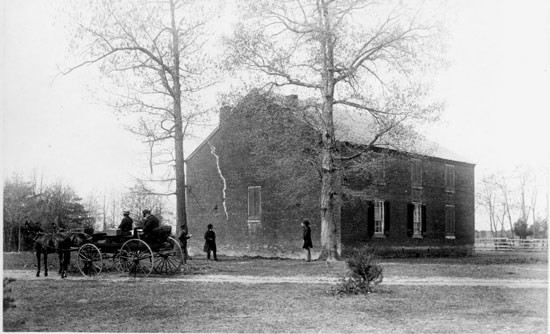
Veterans visit Salem Church around 1900. [The church had three entrances for worshipers--the two on the end were separate entrances for men and women, and the white door on the side was the slave entrance that led to the gallery]
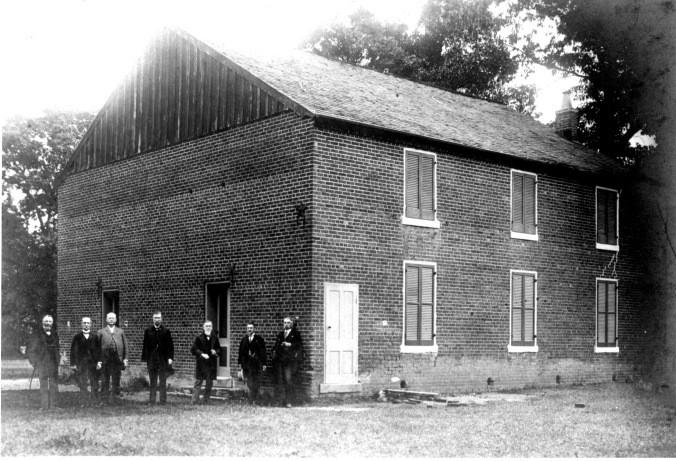
Monument erected in 1927 by the United Daughters of the Confederacy
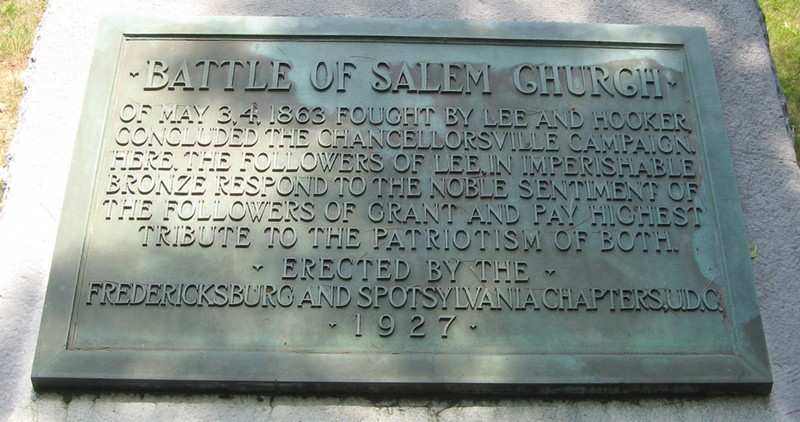
Marker placed in 1903 by Reverend James Powers Smith. Smith was on "Stonewall" Jackson's staff and he placed 10 monuments marking Confederate points in the Fredericksburg area battlefields.
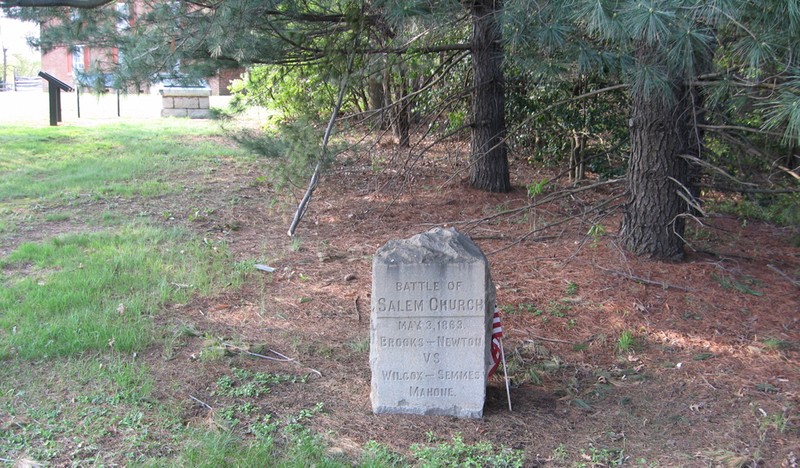
This photo looking east on the Plank Road shows how the landscape has drastically changed. This photo was taken after 1909 because you can see the three monuments: the Smith monument, the 23rd NJ, and the 15th NJ in the distance.
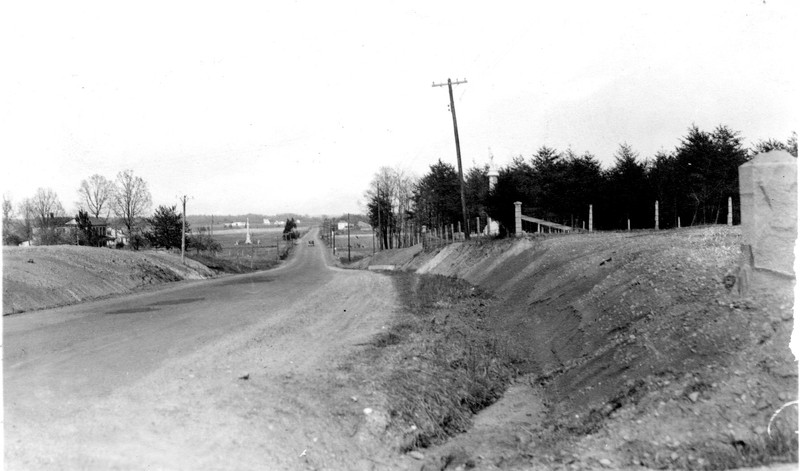
Looking west towards Salem Church in the 1960s
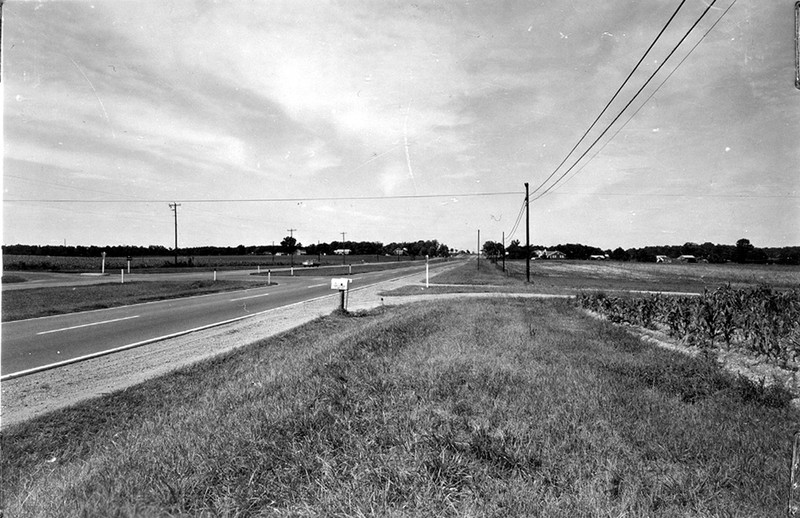
Salem Church
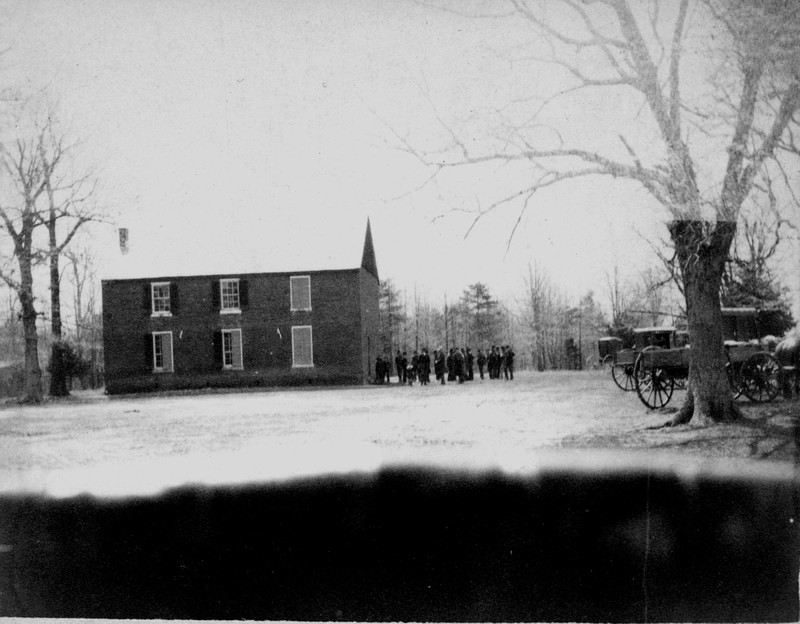
Interior of Salem Church
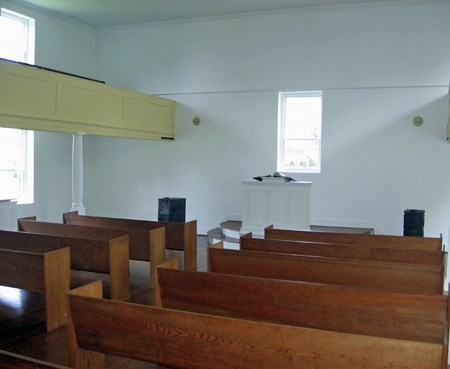
Interior of Salem Church
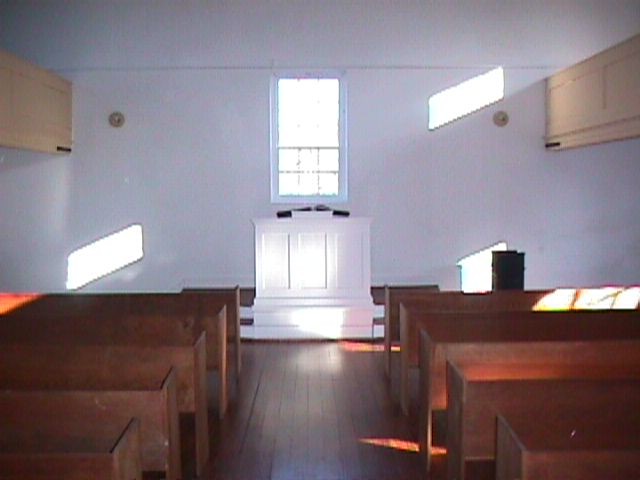
"From Church to Hospital" wayside marker at Salem Church
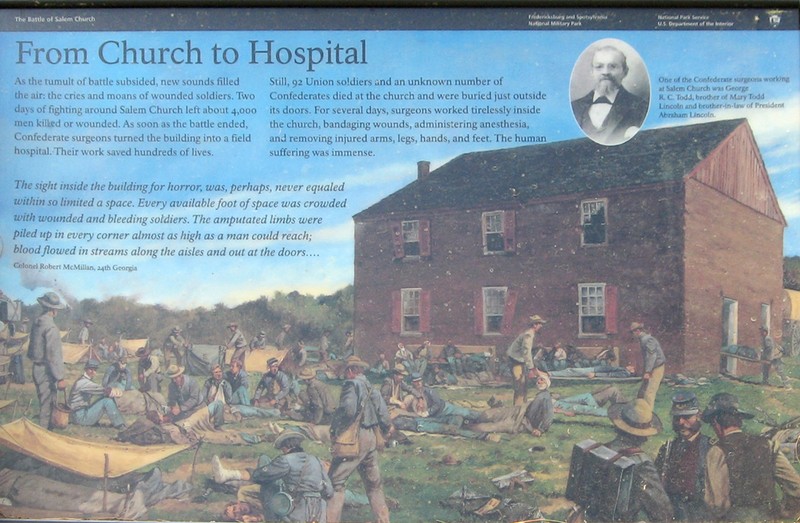
Backstory and Context
Text-to-speech Audio
Prior to the Chancellorsville Campaign, Salem Church had been used by refugees from Fredericksburg during the December 1862 battle and was still being used as storage for the property of displaced citizens. Immediately after the fighting of May 3rd, Salem Church was turned into a field hospital treating both Confederate and Union men. Confederate men cleared the church of the stored furniture and began bringing the wounded into and around the church for medical attention. Both Confederate and Union attendants ended up working on the wounded that night. In the darkness and post-battle confusion assistant surgeon Daniel M. Holt of the 121st New York and his team of medical assistants stumbled into Kershaw’s line and were captured. Because they were medical personnel they were brought to Salem Church where they quickly began working alongside the Confederate surgeons to assist the wounded. Holt and his men were considered noncombatants and were able to return to the Union lines once the campaign finished.
Salem Church’s role as a field hospital continued after the battle was over. After the Federal retreat on May 6, Hooker sent a message to General Lee asking permission to send medical personnel over to assist with the wounded as well as asking to remove Union wounded across the Rappahannock. Lee granted this request and notified Hooker that the Union dead had been buried on the field by his men. Starting on May 8th, Hooker sent hundreds of wagons across, both with supplies and to remove Union casualties to Union field hospitals near Fredericksburg. Union surgeons and medical attendants joined their Confederate counterparts at several field hospitals, including Salem Church, to care for the battle’s casualties.
Over the next few weeks the Confederate and Union armies slowly removed their wounded to other hospitals. Those that died at Salem Church were buried right outside the building; this included 92 Union soldiers and an unknown number of Confederates. Two years later, in 1865, as Union General William T. Sherman passed through the Fredericksburg area on his way to Washington, D.C. he toured the surrounding battlefields. During his survey of the Chancellorsville area he reportedly viewed unburied and partially buried remains around Salem Church and reported this to officials in D.C. This prompted the efforts to rebury Union casualties into one national cemetery, which led to the establishment of Fredericksburg National Cemetery.
About Salem Church:
Salem Church was established as a branch of the Massaponax Baptist Church located south of Fredericksburg and the church building was constructed in 1844. On May 3, 1863 the church became the center of fighting along the Plank Road and was used as a position for Confederate soldiers to fire out of the windows. Some of the physical damage from the battle remains on the walls of the structure. In the aftermath of the battle of Salem Church the building was used as a field hospital and for many years bloodstains remained on the floorboards, until the flooring was replaced. The church’s congregation gradually restored the church in the years after the Civil War and Salem Church was actively used until the 1950s when the New Salem Church was constructed. In 1961, the Salem Baptist Church congregation voted to gift the historic church to the National Park Service in order to open it to the public.
Sources
Furgurson, Ernest B. Chancellorsville, 1863: The Souls of the Brave. New York: Vintage Books, 1992.
Gallagher, Gary W. The Battle of Chancellorsville. National Park Civil War Series. Eastern National, 2007.
Parsons, Philip W. The Union Sixth Army Corps in the Chancellorsville Campaign: A Study of the Engagements of Second Fredericksburg, Salem Church and Banks’s Ford, May 3-4, 1863. Jefferson, NC: McFarland & Company, Inc., 2006.
Sutherland, Daniel E. Fredericksburg and Chancellorsville: The Dare Mark Campaign. Lincoln: University of Nebraska Press, 1998.
"Virtual Tour, Salem Church." Fredericksburg & Spotsylvania NMP. Accessed June 21, 2021. https://www.nps.gov/frsp/learn/photosmultimedia/salem.htm.
John Hennessy. "Good old days at Salem Church." Mysteries & Conundrums. September 9, 2010. Accessed June 21, 2021. https://npsfrsp.wordpress.com/2010/09/09/good-old-days-at-salem-church/.
"Battle of Salem Church monument." Stone Sentinels. Accessed June 18, 2021. https://stonesentinels.com/less-known/salem-church/tour-salem-church/battle-salem-church-monument/.
"Battle of Salem Church Marker." Stone Sentinels. Accessed June 21, 2021. https://stonesentinels.com/less-known/salem-church/tour-salem-church/battle-salem-church/.
John Hennessy. "Good old days at Salem Church." Mysteries & Conundrums. September 9, 2010. Accessed June 21, 2021. https://npsfrsp.wordpress.com/2010/09/09/good-old-days-at-salem-church/.
John Hennessy. "Good old days at Salem Church." Mysteries & Conundrums. September 9, 2010. Accessed June 21, 2021. https://npsfrsp.wordpress.com/2010/09/09/good-old-days-at-salem-church/.
"Fourth of July Concert at Old Salem Church." Fredericksburg & Spotsylvania NMP. June 21, 2018. Accessed June 21, 2021. https://www.nps.gov/frsp/learn/news/fourth-of-july-concert-at-old-salem-church.htm.
"Virtual Tour, Salem Church." Fredericksburg & Spotsylvania NMP. Accessed June 21, 2021. https://www.nps.gov/frsp/learn/photosmultimedia/salem.htm.
John Hennessy. "Good old days at Salem Church." Mysteries & Conundrums. September 9, 2010. Accessed June 21, 2021. https://npsfrsp.wordpress.com/2010/09/09/good-old-days-at-salem-church/.
"From Church to Hospital Wayside Marker." Stone Sentinels. Accessed June 18, 2021. https://stonesentinels.com/less-known/salem-church/tour-salem-church/church-to-hospital/.
